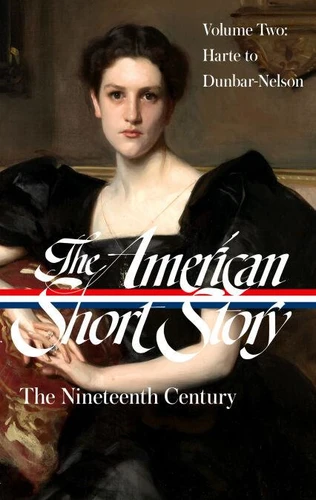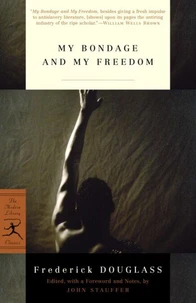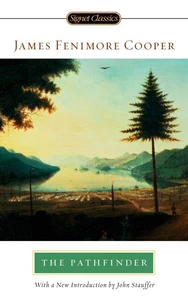The American Short Story: The Nineteenth Century, Volume 2 (LOA #395)
Par :Formats :
Actuellement indisponible
Cet article est actuellement indisponible, il ne peut pas être commandé sur notre site pour le moment. Nous vous invitons à vous inscrire à l'alerte disponibilité, vous recevrez un e-mail dès que cet ouvrage sera à nouveau disponible.
Disponible dans votre compte client Decitre ou Furet du Nord dès validation de votre commande. Le format ePub protégé est :
- Compatible avec une lecture sur My Vivlio (smartphone, tablette, ordinateur)
- Compatible avec une lecture sur liseuses Vivlio
- Pour les liseuses autres que Vivlio, vous devez utiliser le logiciel Adobe Digital Edition. Non compatible avec la lecture sur les liseuses Kindle, Remarkable et Sony
- Non compatible avec un achat hors France métropolitaine
 , qui est-ce ?
, qui est-ce ?Notre partenaire de plateforme de lecture numérique où vous retrouverez l'ensemble de vos ebooks gratuitement
Pour en savoir plus sur nos ebooks, consultez notre aide en ligne ici
- Nombre de pages832
- FormatePub
- ISBN978-1-59853-823-6
- EAN9781598538236
- Date de parution20/01/2026
- Protection num.Adobe DRM
- Infos supplémentairesepub
- ÉditeurLibrary of America
Résumé
The second volume in a landmark story collection that redefines what we thought we knew about the great American literary formA diverse, unprecedented gathering of more than one hundred stories, representing work by fifty different writersAs much a nineteenth-century American invention as the cotton gin and the steamboat, the short story emerged here with a range of innovation and a variety of styles and subjects that has still not been fully appreciated.
Diverse, wide-ranging, and unprecedented in its scope, The American Short Story: The Nineteenth Century gathers more than one hundred stories by fifty different writers. This second volume of The Library of America's two-volume anthology of nineteenth-century American short fiction follows the evolution of American short story from Bret Harte's mid-century tales of the Gold Rush frontier to Alice Dunbar-Nelson's "The Stones of the Village, " a story about racial passing written around 1900 but not published in the author's lifetime.
Henry James, generously represented in this volume, dominates the second half of the century, though also represeanted here are the accomplishments of the so-called local-color writers associated with the post-Civil War period. The indelible stories of Sarah Orne Jewett and Kate Chopin are justly celebrated examples of this strain, and those writers are represented by several stories, but ample space is also given here to stories by Constance Fenimore Woolson and Mary Wilkins Freeman. The reader will also discover the short fiction of Stephen Crane, in whose work naturalism finds its perfect aesthetic and philosophical expressionas well as the indispensable stories of such Black writers as Charles W.
Chesnutt and Paul Laurence Dunbar. The unexpected selection of Thomas Nelson Page's "Marse Chan" provides the context for Chesnutt's groundbreaking explorations of racial identity and his use of African American speech and folklore. Other surprises in this volume include Francis Hopkinson Smith's minor comic masterpiece "Six House in Squantico, " about a town left behind in the post-bellum South. Unrivaled in its range and textual authority, the anthology includes biographies of each writer, a chronology of writers and the American short story from 1800 to 1900, and extensive notes.
Diverse, wide-ranging, and unprecedented in its scope, The American Short Story: The Nineteenth Century gathers more than one hundred stories by fifty different writers. This second volume of The Library of America's two-volume anthology of nineteenth-century American short fiction follows the evolution of American short story from Bret Harte's mid-century tales of the Gold Rush frontier to Alice Dunbar-Nelson's "The Stones of the Village, " a story about racial passing written around 1900 but not published in the author's lifetime.
Henry James, generously represented in this volume, dominates the second half of the century, though also represeanted here are the accomplishments of the so-called local-color writers associated with the post-Civil War period. The indelible stories of Sarah Orne Jewett and Kate Chopin are justly celebrated examples of this strain, and those writers are represented by several stories, but ample space is also given here to stories by Constance Fenimore Woolson and Mary Wilkins Freeman. The reader will also discover the short fiction of Stephen Crane, in whose work naturalism finds its perfect aesthetic and philosophical expressionas well as the indispensable stories of such Black writers as Charles W.
Chesnutt and Paul Laurence Dunbar. The unexpected selection of Thomas Nelson Page's "Marse Chan" provides the context for Chesnutt's groundbreaking explorations of racial identity and his use of African American speech and folklore. Other surprises in this volume include Francis Hopkinson Smith's minor comic masterpiece "Six House in Squantico, " about a town left behind in the post-bellum South. Unrivaled in its range and textual authority, the anthology includes biographies of each writer, a chronology of writers and the American short story from 1800 to 1900, and extensive notes.
The second volume in a landmark story collection that redefines what we thought we knew about the great American literary formA diverse, unprecedented gathering of more than one hundred stories, representing work by fifty different writersAs much a nineteenth-century American invention as the cotton gin and the steamboat, the short story emerged here with a range of innovation and a variety of styles and subjects that has still not been fully appreciated.
Diverse, wide-ranging, and unprecedented in its scope, The American Short Story: The Nineteenth Century gathers more than one hundred stories by fifty different writers. This second volume of The Library of America's two-volume anthology of nineteenth-century American short fiction follows the evolution of American short story from Bret Harte's mid-century tales of the Gold Rush frontier to Alice Dunbar-Nelson's "The Stones of the Village, " a story about racial passing written around 1900 but not published in the author's lifetime.
Henry James, generously represented in this volume, dominates the second half of the century, though also represeanted here are the accomplishments of the so-called local-color writers associated with the post-Civil War period. The indelible stories of Sarah Orne Jewett and Kate Chopin are justly celebrated examples of this strain, and those writers are represented by several stories, but ample space is also given here to stories by Constance Fenimore Woolson and Mary Wilkins Freeman. The reader will also discover the short fiction of Stephen Crane, in whose work naturalism finds its perfect aesthetic and philosophical expressionas well as the indispensable stories of such Black writers as Charles W.
Chesnutt and Paul Laurence Dunbar. The unexpected selection of Thomas Nelson Page's "Marse Chan" provides the context for Chesnutt's groundbreaking explorations of racial identity and his use of African American speech and folklore. Other surprises in this volume include Francis Hopkinson Smith's minor comic masterpiece "Six House in Squantico, " about a town left behind in the post-bellum South. Unrivaled in its range and textual authority, the anthology includes biographies of each writer, a chronology of writers and the American short story from 1800 to 1900, and extensive notes.
Diverse, wide-ranging, and unprecedented in its scope, The American Short Story: The Nineteenth Century gathers more than one hundred stories by fifty different writers. This second volume of The Library of America's two-volume anthology of nineteenth-century American short fiction follows the evolution of American short story from Bret Harte's mid-century tales of the Gold Rush frontier to Alice Dunbar-Nelson's "The Stones of the Village, " a story about racial passing written around 1900 but not published in the author's lifetime.
Henry James, generously represented in this volume, dominates the second half of the century, though also represeanted here are the accomplishments of the so-called local-color writers associated with the post-Civil War period. The indelible stories of Sarah Orne Jewett and Kate Chopin are justly celebrated examples of this strain, and those writers are represented by several stories, but ample space is also given here to stories by Constance Fenimore Woolson and Mary Wilkins Freeman. The reader will also discover the short fiction of Stephen Crane, in whose work naturalism finds its perfect aesthetic and philosophical expressionas well as the indispensable stories of such Black writers as Charles W.
Chesnutt and Paul Laurence Dunbar. The unexpected selection of Thomas Nelson Page's "Marse Chan" provides the context for Chesnutt's groundbreaking explorations of racial identity and his use of African American speech and folklore. Other surprises in this volume include Francis Hopkinson Smith's minor comic masterpiece "Six House in Squantico, " about a town left behind in the post-bellum South. Unrivaled in its range and textual authority, the anthology includes biographies of each writer, a chronology of writers and the American short story from 1800 to 1900, and extensive notes.








